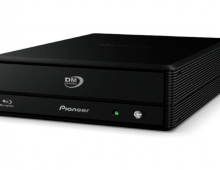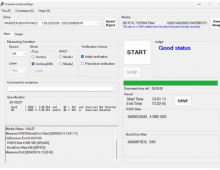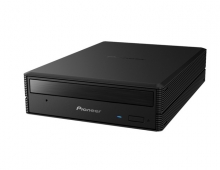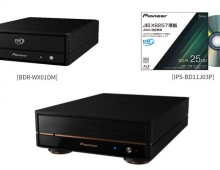
Dual-layer 8.5GB recordable DVDs
There is optimistic news at this week's Ceatec Japan 2003 exhibition for users looking to squeeze extra data onto a recordable DVD disc. Companies are demonstrating dual-layer versions of both DVD-R and DVD+R discs that offer almost double the data capacity of today's standard blank DVD discs.
Pioneer Corp., Koninklijke Philips Electronics NV and Mitsubishi Kagaku Media Co. Ltd., the latter better known by its Verbatim brand name, have said they have developed prototype discs that can hold up to 8.5 gigabytes (GB) of data and will show them at Ceatec, according to statements from the companies.
Most DVD-R and DVD+R discs on the market at present offer a data storage capacity of 4.7GB. That's plenty of space for your family snapshots and word processor file backups, but this space gets filled up fast when large multimedia files, such as video clips, are recorded onto the disc.
In order to store more data, the developers of the DVD format specified several additional type of disc when the format was decided on in the mid-nineties.
The simplest of these disc types, and the most common today, is the 4.7GB single-sided, single-layer disc -- that is, a single recording layer that can be used on one side only.
Developers also included support for double-sided discs, double-layer discs and a combination of the two. Mitsubishi Kagaku is already selling double-sided, single-layer discs which double the data capacity to 9.4GB by allowing recording on both sides of the disc although these require the user to eject, flip-over and reinsert the disc when wanting to switch from side one to side two.
The prototype discs from Pioneer, Philips and Mitsubishi Chemical have a single recording side, like current discs, but two recording layers. By adjusting the focus of the laser beam each layer can be targeted without disrupting data on the other. This allows for up to 8.5GB of data to be stored on a single-sided disc, which isn't quite the data capacity of a double-sided disc but can all be accessed without the hassle of turning the disc over.
Dual-layer discs are already supported under the DVD-Video format and some commercial video discs already use the format. If you've seen a momentary pause in the middle of a DVD movie that's likely the player switching from layer one to layer two.
Pioneer, which developed the DVD-R prototype, still has some work to do on the technology and will propose it as a standard to the DVD Forum when its development is complete, it said in a statement. Philips, which produced the DVD+R prototype with Mitsubishi Kagaku, said its disc is expected to be ready for commercial launch in 2004.
Compatibility with existing drives and players might be an issue. Pioneer said its disc can be played back on most existing DVD players while Philips said ensuring compatibility with existing players was one of its prime concerns when developing the DVD+R disc. Both companies noted users will need to purchase new drives if they want to write to the new discs and Philips said drives are expected with the discs in 2004.
Most DVD-R and DVD+R discs on the market at present offer a data storage capacity of 4.7GB. That's plenty of space for your family snapshots and word processor file backups, but this space gets filled up fast when large multimedia files, such as video clips, are recorded onto the disc.
In order to store more data, the developers of the DVD format specified several additional type of disc when the format was decided on in the mid-nineties.
The simplest of these disc types, and the most common today, is the 4.7GB single-sided, single-layer disc -- that is, a single recording layer that can be used on one side only.
Developers also included support for double-sided discs, double-layer discs and a combination of the two. Mitsubishi Kagaku is already selling double-sided, single-layer discs which double the data capacity to 9.4GB by allowing recording on both sides of the disc although these require the user to eject, flip-over and reinsert the disc when wanting to switch from side one to side two.
The prototype discs from Pioneer, Philips and Mitsubishi Chemical have a single recording side, like current discs, but two recording layers. By adjusting the focus of the laser beam each layer can be targeted without disrupting data on the other. This allows for up to 8.5GB of data to be stored on a single-sided disc, which isn't quite the data capacity of a double-sided disc but can all be accessed without the hassle of turning the disc over.
Dual-layer discs are already supported under the DVD-Video format and some commercial video discs already use the format. If you've seen a momentary pause in the middle of a DVD movie that's likely the player switching from layer one to layer two.
Pioneer, which developed the DVD-R prototype, still has some work to do on the technology and will propose it as a standard to the DVD Forum when its development is complete, it said in a statement. Philips, which produced the DVD+R prototype with Mitsubishi Kagaku, said its disc is expected to be ready for commercial launch in 2004.
Compatibility with existing drives and players might be an issue. Pioneer said its disc can be played back on most existing DVD players while Philips said ensuring compatibility with existing players was one of its prime concerns when developing the DVD+R disc. Both companies noted users will need to purchase new drives if they want to write to the new discs and Philips said drives are expected with the discs in 2004.





















